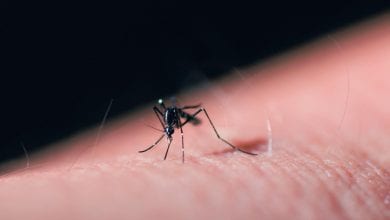
Homelessness declined by 9.4% in New Jersey
Biden-Harris Administration investments and actions prevented a spike in homelessness overall and led to nationwide decreases in homelessness among Veterans, families, and youth
NEW JERSEY – The U.S. Department of Housing and Urban Development (HUD) today released its 2022 Annual Homeless Assessment Report Part 1 to Congress. The report found that there were 582,462 people experiencing homelessness in the United States on a single night in January 2022.
In New Jersey, the yearly Point-In-Time count found 8,752 people experiencing homelessness in January 2022, a 1.3% decrease from 2020.
These data reflect a single-night snapshot of homelessness in America in early 2022 and the first complete single-night count of people experiencing homelessness since the arrival of the COVID-19 pandemic.
The Point-In-Time count is one of the important measures of homelessness that the federal government uses. The yearly count captures people who are in sheltered settings and unsheltered – sleeping on the streets, in encampments, vehicles, or other places not meant for human habitation. The PIT count is not meant to capture the entire universe of everyone who experiences homelessness over the year; it provides a reliable way to measure whether homelessness is going up or down from year to year and a way to compare homelessness across communities.
COVID-19 and its impacts on the economy could have led to significant increases in homelessness. Investments, partnerships, and outreach by government agencies led to only a .3 % increase in the number of people experiencing homelessness nationwide from 2020 to 2022.
The rate of overall homelessness is due in large part to a robust federal response that prevented evictions through Emergency Rental Assistance distributed to more than 3 million households, expanded resources for vulnerable families through the Child Tax Credit, and provided other financial transfers through stimulus.
The Biden-Harris Administration intends to not only stop but reverse the post-2016 trend of rising homelessness and reduce it 25% by 2025, as stated in All In, The Federal Strategic Plan to Prevent and End Homelessness, which was released today by the U.S. Interagency Council on Homelessness.
National statistics:
- Compared with 2020, homelessness among people in shelters declined by 1.6%,
- Homelessness among people in unsheltered settings increased by 3.4%,
- Veterans experiencing homelessness decreased by 11 percent, a 55 percent decrease since 2010. Between 2020 and 2022,
- Families with children experiencing homelessness declined by six percent between 2020 and 2022, marking a total decline of 36 percent since 2010, and
- There was a 12 percent decrease in the number of people under the age of 25 who experienced homelessness on their own as “unaccompanied youth.”
“HUD and everyone in the Biden-Harris Administration is committed to ensuring everyone has a safe, stable place to call home. Data shows that homelessness remains a national crisis, but it also shows that the historic investments this Administration has made to address this issue, can work,” said Department of Housing and Urban Development (HUD) Secretary Marcia L. Fudge. “The Biden-Harris Administration is committed to systemically addressing homelessness and combating the systemic racism that has created racial and ethnic disparities in homelessness.”
“Homelessness and its devastating effects on individuals, families, and children are always top of mind at HUD. We are committed to doing everything we can to reduce the number of New Jerseyans without a home,” said Alicka Ampry-Samuel, HUD Regional Administrator for New York and New Jersey. “While the statistics in New Jersey are optimistic, HUD will not stop until we see a more significant reduction in homelessness. HUD will continue to provide funding and available resources so that the number of homeless individuals continues to decline.”
New Jersey statistics – compared with 2020:
- In New Jersey, there are 7,776 people in shelters. Compared with 2020, homelessness among people in shelters declined by 105, or 1.3%.
- In 2022, there were 976 homeless people in unsheltered settings, a decrease of 805 people.
- The Point-In-Time count found 479 Veterans experiencing homelessness in 2022, down 116, or 19.5%.
- Households with children experiencing homelessness declined by 8.2% – 992 counted in January, 89 fewer than in 2020.
- 438 people under the age of 25 experienced homelessness on their own as “unaccompanied youth,” a 14.8% decrease, or 76 less than in 2020.
HUD defines chronic homelessness as an individual who has experienced homelessness for a year or longer or has experienced at least four episodes of homelessness in the last three years and has a disability.
In New Jersey, the 2022 Point-In-Time count found 1,521 chronically homeless individuals, 82 less than in 2020, a 5.1% reduction in chronic homelessness.
Nationwide, the overall number of people experiencing homelessness in 2022 increased slightly compared with 2020. Homelessness rose significantly for individuals, people with disabilities who experience long-term homelessness, and people in unsheltered settings. Single individuals that are not part of family households continue to represent the largest group of people experiencing homelessness. Homelessness among single individuals increased by 3.1%. The number of chronically homeless individuals (individuals with disabilities who have been homeless for long periods of time) increased by 16 percent between 2020 and 2022.
There continues to be an overrepresentation of people who identify as Black, African American, or African, as well as indigenous people (including Native Americans and Pacific Islanders) among people experiencing homelessness.
The data shows that overall homelessness remained relatively unchanged despite the economic challenges created by the COVID-19 pandemic. This may be due in large part to federal actions that provided communities with additional homeless assistance resources and regulatory flexibilities, prevented renters from evictions through emergency rental assistance, expanded resources for vulnerable families through the Child Tax Credit, and provided other financial transfers through stimulus.
These results, however, do not reflect the full impact of the Biden-Harris Administration’s American Rescue Plan and HUD’s House America initiative, which largely took place during calendar year 2022. For instance, the majority of HUD’s Emergency Housing Voucher program lease-ups took place during 2022. Also, in 2022, HUD released a first-of-its-kind Initiative to Address Unsheltered and Rural Homelessness, which HUD plans to award in early in 2023.
HUD releases the Annual Homeless Assessment Report to Congress (AHAR) in two parts. Part 1 provides Point-in-Time (PIT) estimates, offering a snapshot of homelessness on a single night. The one-night counts are conducted during the last 10 days of January each year, with extensions approved on a case-by-case basis. The PIT counts also provide an estimate of the number of people experiencing homelessness within particular homeless populations, such as individuals with chronic patterns of homelessness and veterans experiencing homelessness.
The 2022 report provides comparisons with 2020 data because many communities were considerably impacted by COVID-19 during the 2021 Point in Time (PIT) count and did not conduct an unsheltered PIT count. The 2020 PIT estimate included both sheltered and unsheltered homelessness. In addition, the report compares 2022 data to data from 2010, the first year that the federal government set a national goal to end homelessness.





